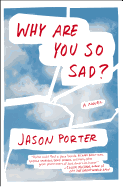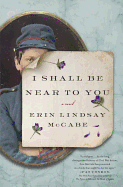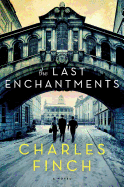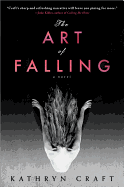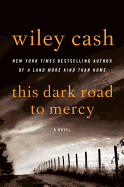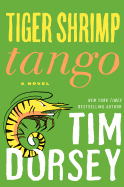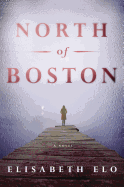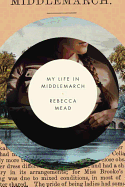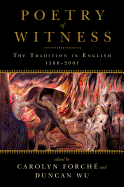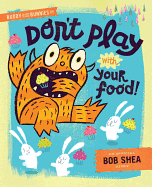 |
| photo: Jackson Williams |
A former dancer and dance critic, Kathryn Craft naturally gravitated toward the world of modern dance in her debut novel, The Art of Falling (see our review below), which explores the demands the world of dance makes on a woman's appearance and the healing power of art through the recovery of Penny Sparrow, an impassioned but large-framed dancer who survives a 14-story fall. Craft serves on the board of the Philadelphia Writers Conference. She is also a contributing editor to the Blood-Red Pencil blog. She lives in Doylestown, Pa., with her husband.
How did you develop the idea for The Art of Falling?
I've always been fascinated by stories of miraculous survival. The seed for this novel came from an actual newspaper account I read, back in 2003, about a woman who walked away from a high-rise suicide attempt with only a broken arm. And it was the second time she had tried to kill herself! This time she fell 14 stories--she was not messing around. I wondered how she felt to have survived, and what it might take for her to get the message that it might not be her time. That led to all sorts of questions that I wove into the story.
What role has dance played in your life?
I came to dance late--when I was 16--but realized at once I'd been looking for it my whole life. My freshman year at college I went along with a nervous but eminently more qualified classmate to the dance company auditions. She didn't make it, and I did--I would have loved to be a fly on the wall when that decision was made! Over the course of the next six years, while pursuing a master's in education, modern dance became an important part of my life. I began to choreograph my sophomore year and continued through my early 30s to create some 25 major works, several of them commissions.
I came to writing through dance. I was in a performance in Allentown, Pa., that our company publicist was trying to get reviewed by the local daily paper. Turns out they didn't have a dance critic. I applied for the position and ended up reviewing dance and writing arts features for 19 years.
I tapped both the choreography and dance writing skills for this novel, which required that I design movement in my head and then translate it into what I hope the reader will find to be evocative written images. I quit reviewing dance in 2002. In December, to be exact. After reviewing some 60 productions of it, I couldn't take one more Nutcracker.
Have there been tough times in your own life that influenced the development of this story?
In 1997, after 15 years of marriage, my first husband committed suicide. "I was going to divorce him," I'm always quick to say, as if that fact could explain his actions, or distance me from its horror. Once the shock abated, though, I thought, What does a writer do to come to terms with that kind of tragedy? You write, of course. Ultimately I decided fiction best fulfilled my lingering need to create, from the chaos of these events, a better story.
Anyone familiar with the stages of grief knows of its anger, and I felt plenty of that after the suicide. How could he do this to our sons, who were only eight and 10 at the time? How could he do this to me? I sensed that the only path to forgiveness lay in empathy. Yet I'd always been an optimist; I had no way to relate to that kind of terminal despair.
I needed a character.
I began with a dancer at war with her body so that ongoing inner conflict underscored all else. I dismantled her support system. Took away the father she adored and left her with the burden of a mother who lived through her. Took away her mentor. Stranded her in a world with harsh body-level expectations, where competition can trump true friendship. I gave her natural talent and exclusive training, then whittled away at her faith and resolve with years of rejection. Then I gave her a taste of success--a taste of love--then yanked both away at the same time. Finally, at that point, I thought, maybe.
At this point, Penelope Sparrow came raging to life--and started fighting back. I knew then that I could not only bring her back from the edge, but from the depths of her fall.
Do you think the demand for a certain body type in dance will ever change?
It already has changed. By 2002, when I quit writing dance criticism, I could already see it, especially in modern dance (in ballet, womanly hips are not conducive to balancing en pointe). But companies like Bill T. Jones/Arnie Zane and Yoshiko Chuma and the School of Hard Knocks have long used disparate bodies in their work. When parallel effort travels through a company's dancers, yet manifests differently through individual bodies, the effect is quite beautiful--and very American, just like modern dance.
An inspiration for my book was the work of Liz Lerman, who founded Dance Exchange, a company of intergenerational dancers. Assuming training and talent are at their necessary peak, each company is free to establish its own body politics. Such justifications would have been meaningless to Penelope Sparrow at the outset of the book, however, since she couldn't appreciate her body's unique strengths and talents.
Why is female body image an important theme to you?
My mother was never fond of her body, and I couldn't help but absorb the consequences of that attitude--I look much like her. I saw myself, through her eyes, as a girl who needed to be fixed.
All my life I've swung between the need to maximize my physical potential to trying to accept my body as is, never quite finding the balance. My book raises more questions than it answers.
While many men can relate to such feelings, I think that aberrant body image is a way we women hold ourselves back from true gender equality. There is no other like us. Our individuality is the source of our true creative contribution. I wanted to explore that.
What's next for your writing career?
Sourcebooks just offered me a contract for my second novel, While the Leaves Stood Still, based on the daylong standoff that resulted in my husband's suicide. Many elements will be fictionalized--it will be set in the current day, for instance. In the background will be the standoff between a desperate man and police, and in the foreground, a standoff within family relationships as two generations of women almost break under the pressure that those tense hours of uncertainty deliver. I feel everything in my life and my writing preparation has brought me to this moment, and I'm ready to take it on. Ultimately, it will be about the courage it takes to choose life. --Jaclyn Fulwood, youth services manager, Latah County Library District; blogger at Infinite Reads
Kathryn Craft: Art and Courage
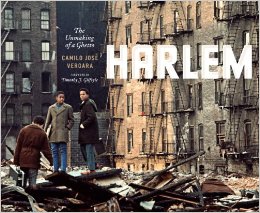 Harlem: The Unmaking of a Ghetto by Camilo José Vergara (University of Chicago Press, $55) results from a project started in 1970, when author and photographer Vergara began documenting what he thought was the gradual collapse of an inner-city community. But he found, in 43 years, that "the destiny of depopulated, decaying neighborhoods is not simply a story of continuous decline." Harlem evolved: some areas declined, others prospered, and it's now a thriving, diverse community. Vergara begins with four young music students walking over rubble, and a man--a scavenger--in a horse-drawn cart. Some 350 pages later, we've seen Jimbo's Hamburger Palace and a music-themed McDonald's, a basketball game, a rainy noir corner on West 125th, the snowy wreckage of the Renaissance Ballroom and Casino, ruins and semi-ruins (artistically striking, as devastation often is), the Italianate townhouses of Strivers Row, community gardens and churches.
Harlem: The Unmaking of a Ghetto by Camilo José Vergara (University of Chicago Press, $55) results from a project started in 1970, when author and photographer Vergara began documenting what he thought was the gradual collapse of an inner-city community. But he found, in 43 years, that "the destiny of depopulated, decaying neighborhoods is not simply a story of continuous decline." Harlem evolved: some areas declined, others prospered, and it's now a thriving, diverse community. Vergara begins with four young music students walking over rubble, and a man--a scavenger--in a horse-drawn cart. Some 350 pages later, we've seen Jimbo's Hamburger Palace and a music-themed McDonald's, a basketball game, a rainy noir corner on West 125th, the snowy wreckage of the Renaissance Ballroom and Casino, ruins and semi-ruins (artistically striking, as devastation often is), the Italianate townhouses of Strivers Row, community gardens and churches.




